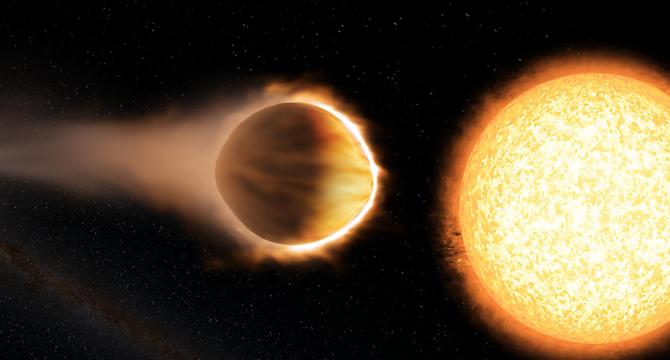Brighter Side of News
2M
454

Image Credit: Brighter Side of News
Astronomers capture first 3D view of an exoplanet’s atmosphere and climate
- Astronomers have obtained a groundbreaking 3D view of a distant exoplanet's atmosphere and climate, revealing extreme winds, vertical circulation patterns, and unique chemical compositions.
- The planet, known as WASP-121b or Tylos, is an ultra-hot Jupiter with scorching temperatures and high-speed winds due to its tidal lock with one side facing the star and the other in darkness.
- Researchers discovered a powerful equatorial jet stream and a unilateral flow moving gases from the day side to the cooler night side, challenging conventional weather models.
- Using the ESPRESSO instrument on ESO's VLT, astronomers were able to map different layers of the exoplanet's atmosphere, detecting elements like iron, sodium, hydrogen, and even titanium.
- Current atmospheric models struggle to replicate observed wind patterns, highlighting the need to refine models for a better understanding of exoplanetary atmospheres and climate processes.
- Future telescopes like the ELT will provide more insight into exoplanet atmospheres, offering the potential for groundbreaking discoveries in planetary science.
- This research signifies a new era in exoplanet science, bringing scientists closer to understanding planetary atmospheres and potentially discovering Earth-like worlds in the future.
- The study was conducted by researchers at the European Southern Observatory (ESO) and other institutions, demonstrating significant progress in planetary science and atmospheric research.
- The findings present a crucial testbed for refining atmospheric models and advancing our knowledge of planetary weather systems beyond our solar system.
- Astronomers anticipate that the ELT will revolutionize the study of exoplanet atmospheres, providing unprecedented insights into the climates of distant worlds.
Read Full Article
27 Likes
For uninterrupted reading, download the app